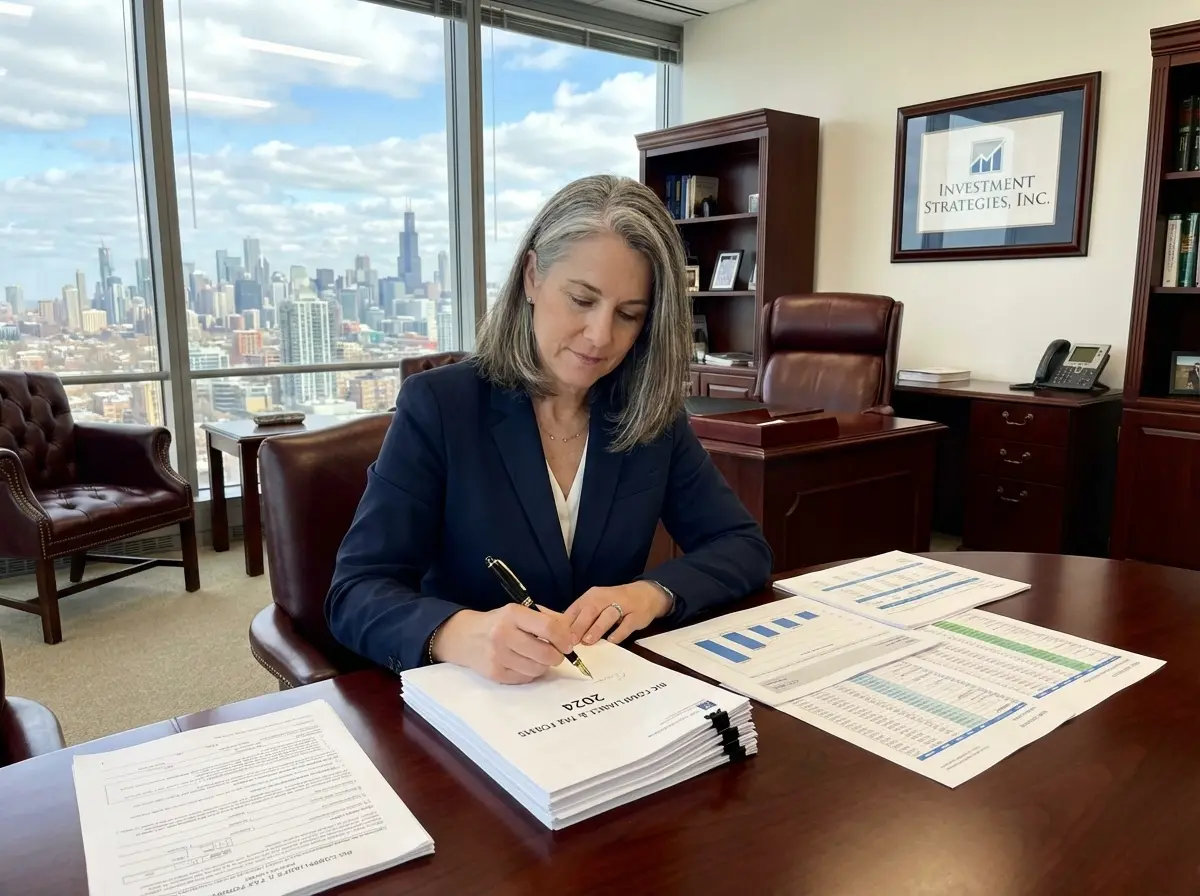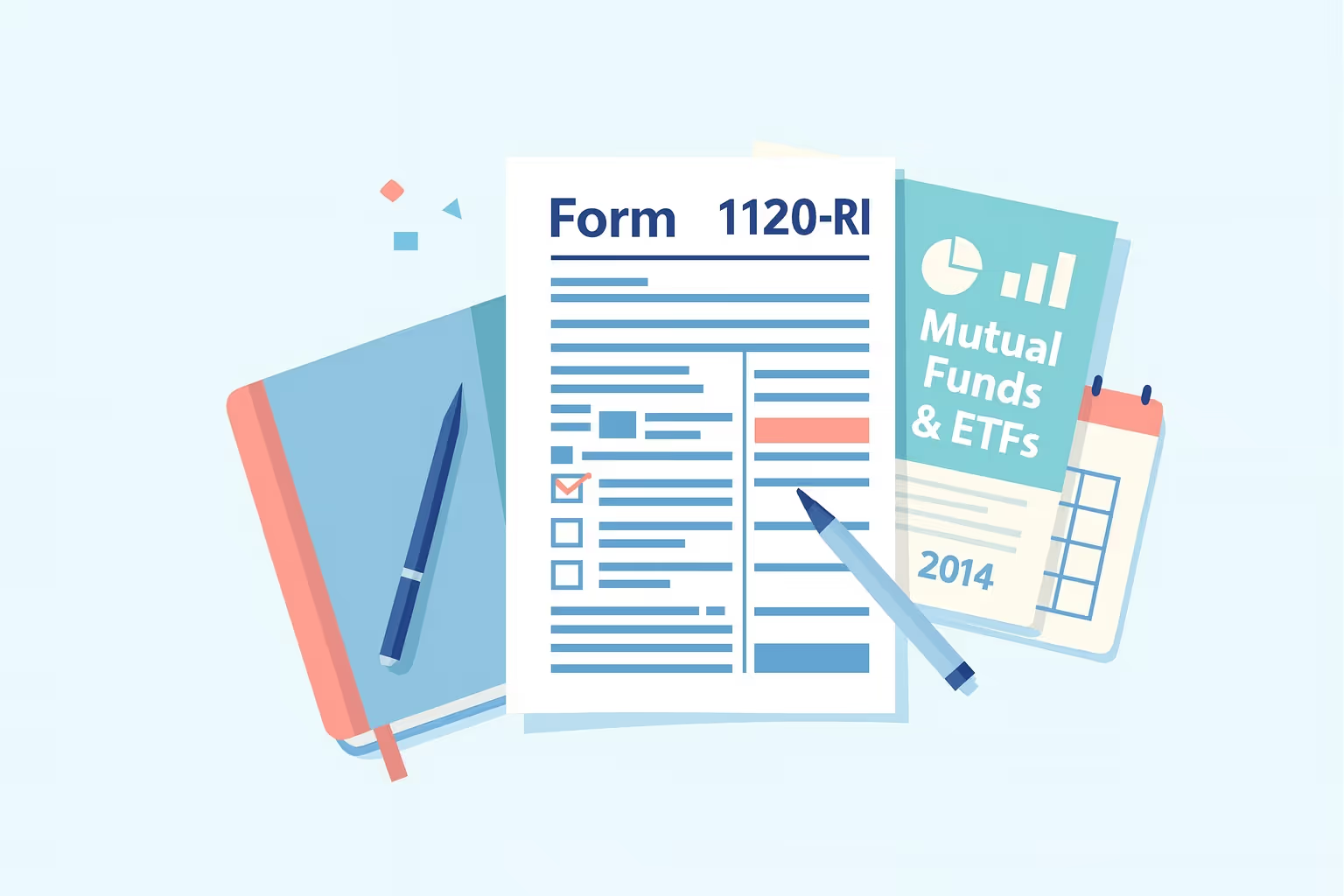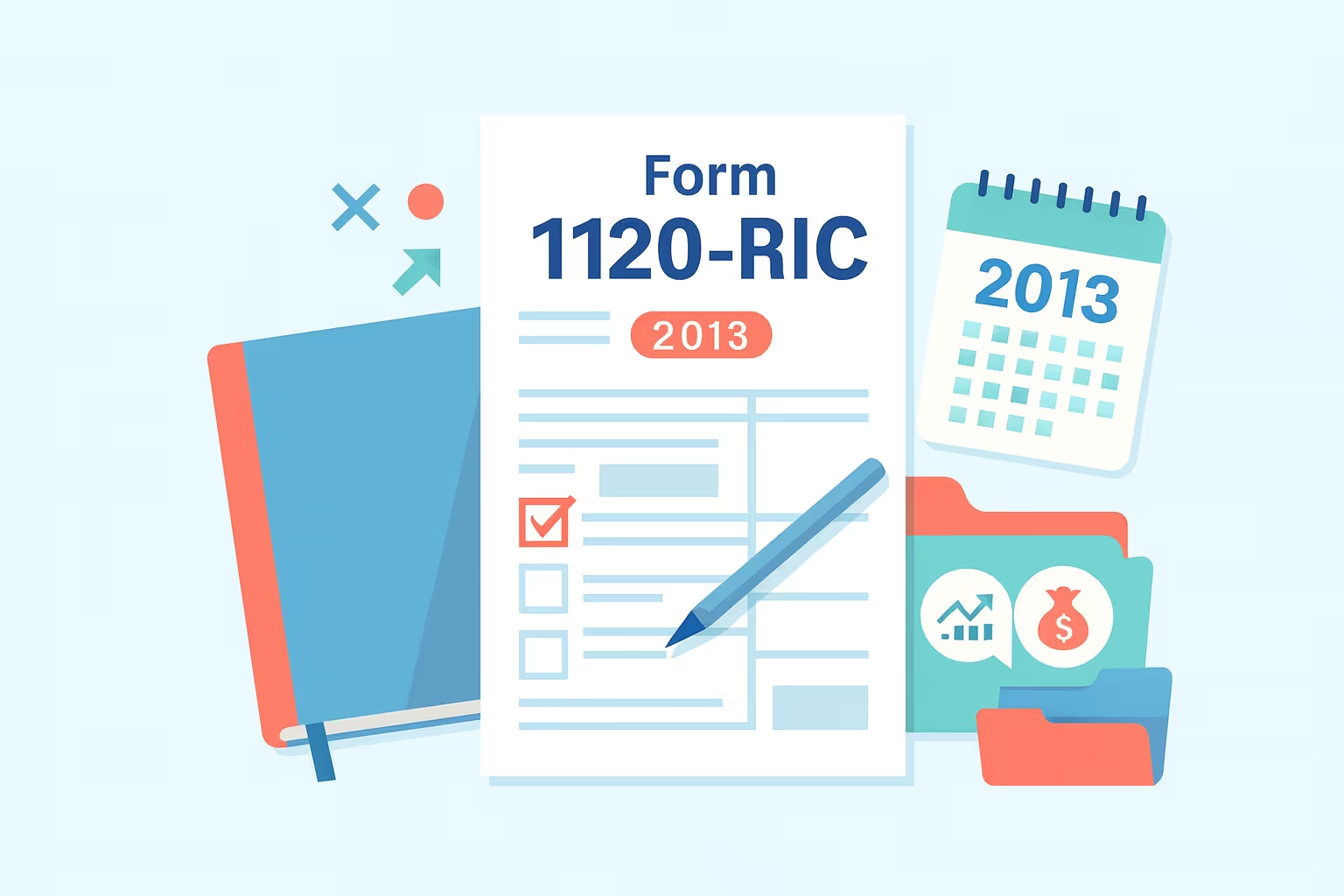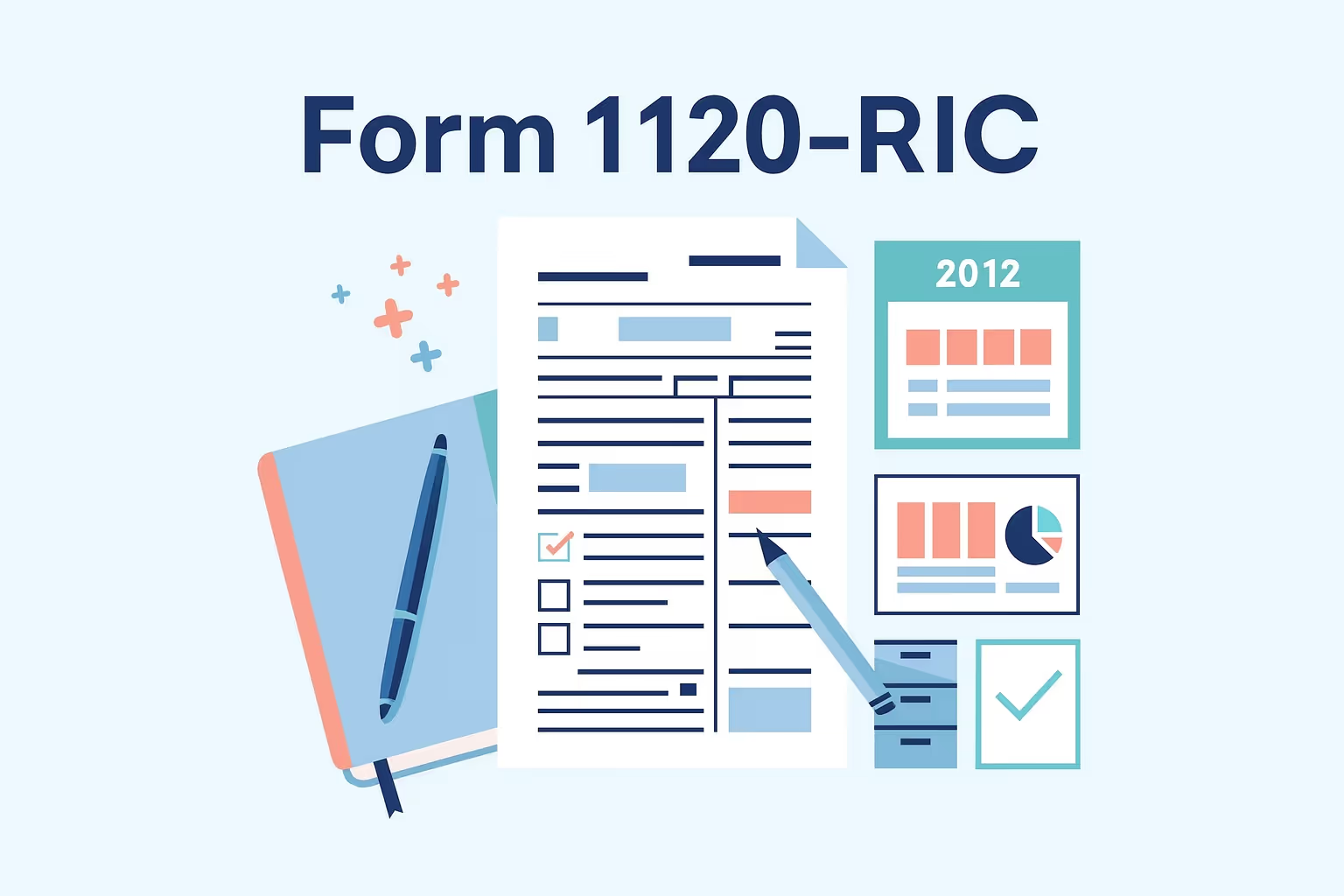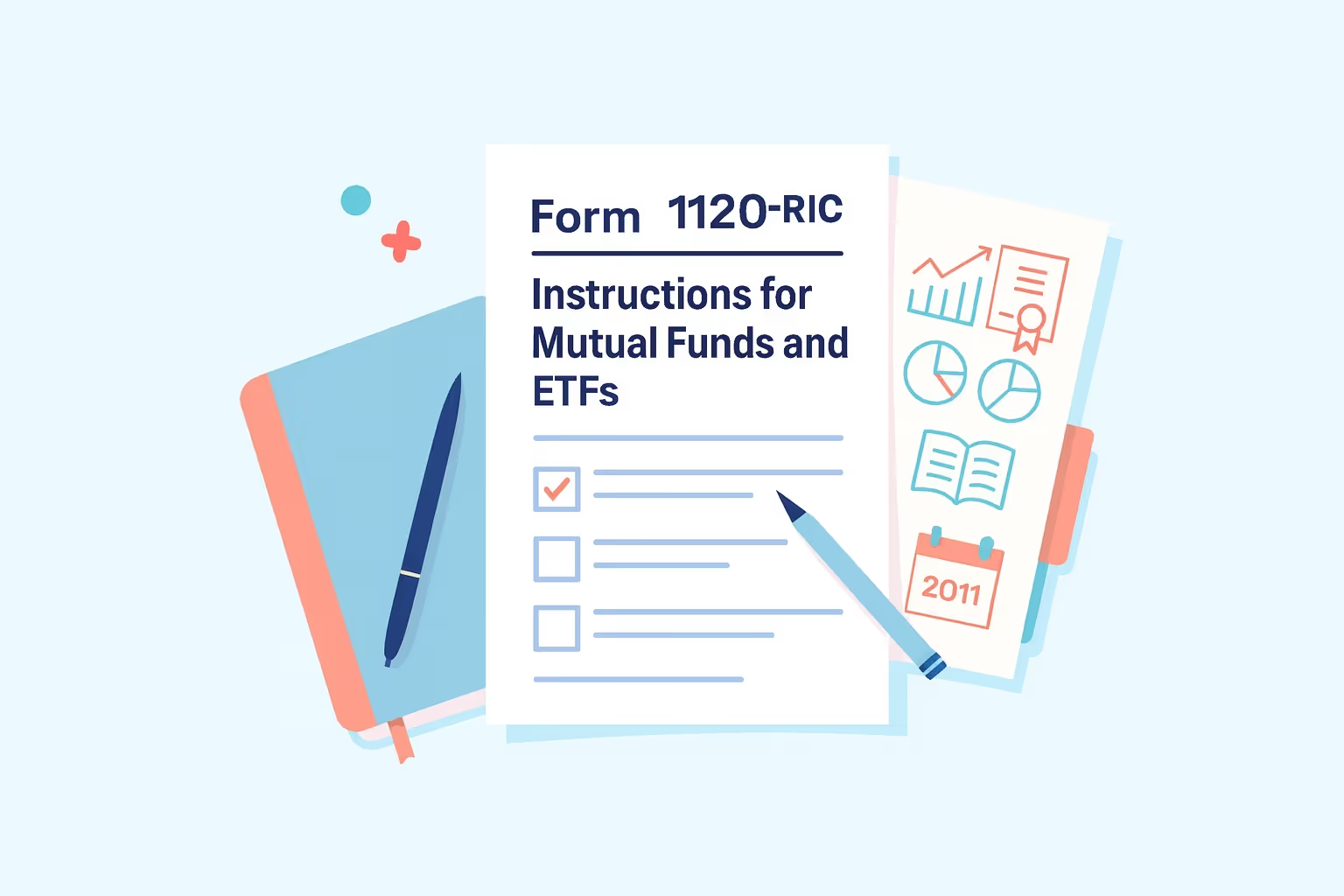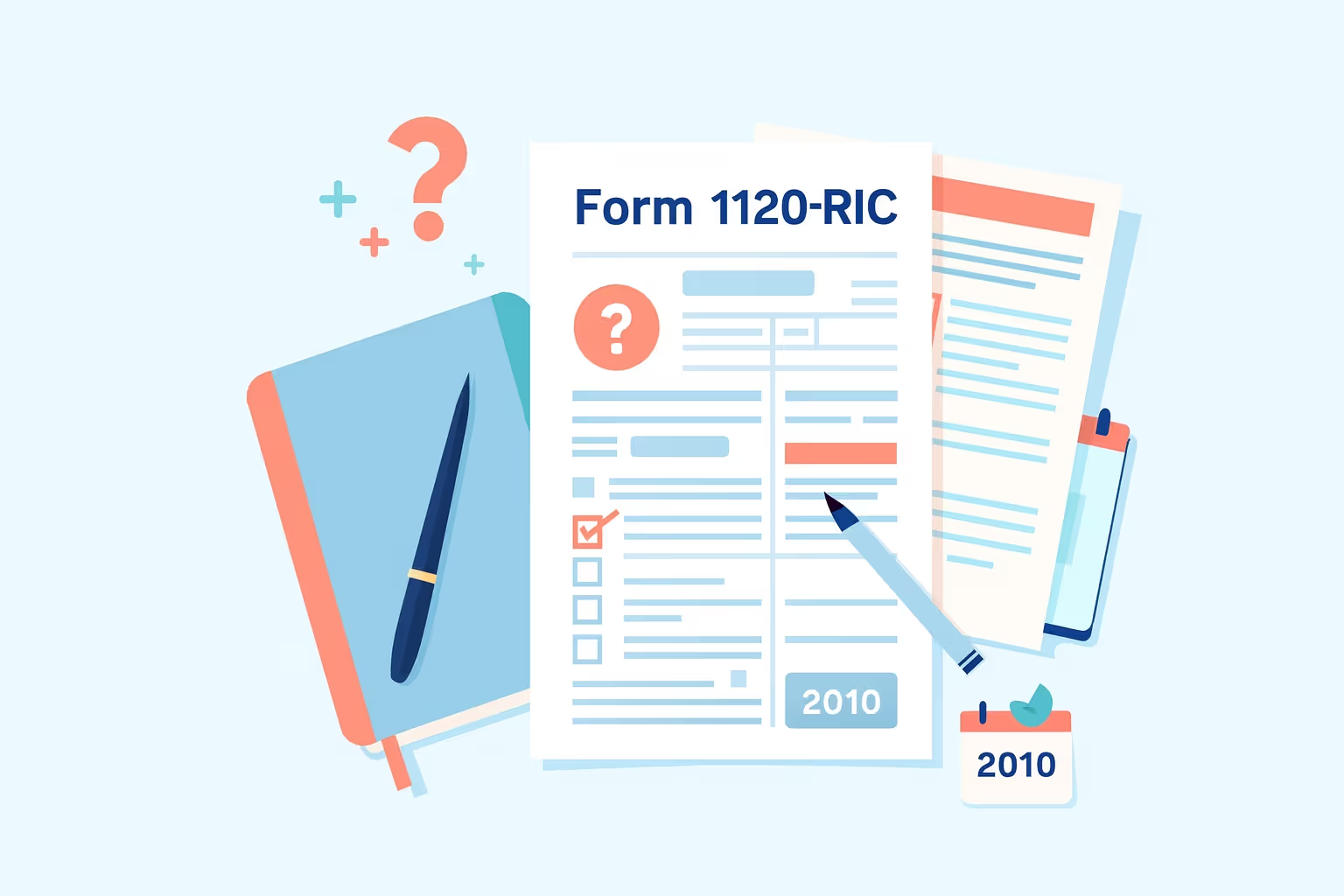
What Form 1120-RIC (2016) Is For
Form 1120-RIC (2016) is the annual income tax return used by regulated investment companies. These entities include mutual funds, unit investment trusts, and other investment companies that choose to qualify as regulated investment companies under federal tax law. The form reports income, deductions, capital gains, dividends, and other income items for the taxable year. It also requires schedules such as Schedule D and Schedule K to help the IRS determine the tax imposed on the company’s net income.
When You’d Use Form 1120-RIC for 2016
You would use Form 1120-RIC for the 2016 tax year in the following situations:
- A late filing occurs when a regulated investment company misses the original due date or receives an IRS notice about an unfiled income tax return.
- The form is used to correct errors involving income, deductions, capital gains, or other figures that affect the tax imposed or qualification rules.
- The form applies when schedules tied to assets, gains, or distributions contain information that is incomplete or inaccurate.
- It is also used to address compliance issues when the company failed tests required to qualify as a regulated investment company for the taxable year.
- Amended state returns are required when federal-level changes must also be reported to state tax agencies.
Visit our page that lists essential IRS forms and instructions you may need when preparing or correcting a 2016 Form 1120-RIC.
Key Rules or Details for the 2016 Tax Year
Form 1120-RIC for the 2016 tax year included several rules that regulated investment companies had to follow when preparing a corporate tax return:
- The filing due date has shifted for calendar-year filers, affecting planning and the timing of estimated tax payments.
- Companies needed accurate financial statements to calculate taxable income, including earnings, profits, and total assets.
- The form required reporting of securities transactions, securities loans, related gains, and payments tied to yearly investment activity.
- Cash distributions, excess amounts, and credits passed to shareholders had to be listed in accordance with IRS instructions.
- Penalties are applied when a corporation fails to demonstrate good faith, provide a reasonable explanation for a noted failure, or correct an identified error.
- Some funds owed excise tax and interest when distributions fell short, while SEC oversight required strict record-keeping and secure filing, indicated by the locked padlock icon used for submission clarity.
Visit our payment plan guide if your fund still owes a balance for the 2016 tax year and needs a manageable repayment option.
Step-by-Step (High Level)
Preparing Form 1120-RIC for the 2016 tax year requires a clear and consistent process to ensure the filing is complete, accurate, and in compliance with IRS rules. These steps help a regulated investment company confirm its status, organize key documents, and avoid issues that may delay processing or lead to follow-up notices.
Gather IRS transcripts
Start by reviewing the company’s account transcript. This document shows prior filings, posted payments, notices, and any actions that may affect the taxpayer. Checking these details early helps you understand the extent of information needed and prevents repeated errors from earlier years.
Use the correct 2016 form and instructions
Download the appropriate 2016 version of Form 1120-RIC directly from the IRS. Each tax year has its own specific rules, and using a current version can lead to reporting mistakes because the requirements are not consistent across years. Confirm that you are working with the proper revision before entering any figures.
Attach required schedules
A complete return must include supporting schedules. Add Schedule D for capital gains, Schedule K for other company information, and Form 8613 if the fund owes excise tax. These items ensure comprehensive business reporting and enable the IRS to verify totals against different forms of information.
Add statements for amended returns
When filing an amended return, provide a clear explanation for each change. Identify affected lines and describe why the updates were necessary. If the company has personal holding company considerations, note them in the statement. Learn more on our guide that explains how the IRS reviews overdue or amended business filings and why notices may appear after submitting a 2016 RIC return.
File at the correct IRS address
Send the return to the processing center designated for your region and asset size. When uncertain, contact the IRS to confirm the correct location.
Keep copies for records
Store copies of the return, schedules, and supporting documents. These records help verify earnings, distributions, and compliance needs for future filings.
Common Mistakes and How to Avoid Them
Preparing Form 1120-RIC for the 2016 tax year can lead to errors if a company overlooks key requirements. Below are frequent mistakes and clear ways to avoid them:
- Using the wrong tax-year form: Some filers use a current version instead of the 2016 form. To avoid this issue, ensure you download the correct year’s instructions and verify the revision date before starting.
- Incomplete income and gains reporting: Missing figures for capital gains, distributions, or other income can trigger IRS notices. Review all investment activity and compare totals with internal records before filing.
- Failing qualification tests: Errors with distribution levels, asset composition, or income sources can affect RIC status. Verify each test with updated worksheets and keep supporting documents on hand.
- Skipping excise tax requirements: Some funds forget Form 8613 when distribution targets are not met. Verify year-end distribution totals to determine if excise tax applies.
- Leaving lines blank or writing “see attached”: The IRS needs actual numbers for processing. Enter amounts on each applicable line, even if the figure is zero.
- Missing shareholder notices: Late or incomplete notices can create compliance issues. Track deadlines and keep a checklist of required notices for the year.
What Happens After You File
After you submit the corporate tax return, the IRS reviews the filing and updates the company’s account. Processing times vary, but the agency generally issues notices if more details are needed. The IRS may adjust figures when records do not match or when a person involved in the filing must provide clarification. If penalties apply, the company can request relief by demonstrating reasonable cause, although approval is limited and based on the facts of the situation.
FAQs
What penalties can regulated investment companies face for a late 2016 filing?
A late filing may result in monthly penalties based on unpaid taxes, interest charges, and additional fees if the delay extends beyond the required deadlines. Visit our penalty abatement page to explore options that may help reduce penalties tied to a late or incorrect 1120-RIC filing.
Do investment companies still qualify for a refund from a 2016 filing?
Most refund claims for 2016 are now closed, as the statute of limitations has expired, unless a narrow exception applies under specific IRS rules.
What happens if figures on the corporation income tax return are incorrect?
The IRS may request supporting documents, adjust the filing, or issue a notice explaining the necessary corrections to resolve the discrepancy.
Do I need to amend my state income tax return after updating the federal one?
Many states require an amended state filing when federal numbers change; however, instructions vary, so it’s essential to check the specific state rules.
How do I request missing transcripts needed to confirm net income or distributions?
You can request transcripts online or by phone through IRS tools designed to help verify prior-year reporting details.







